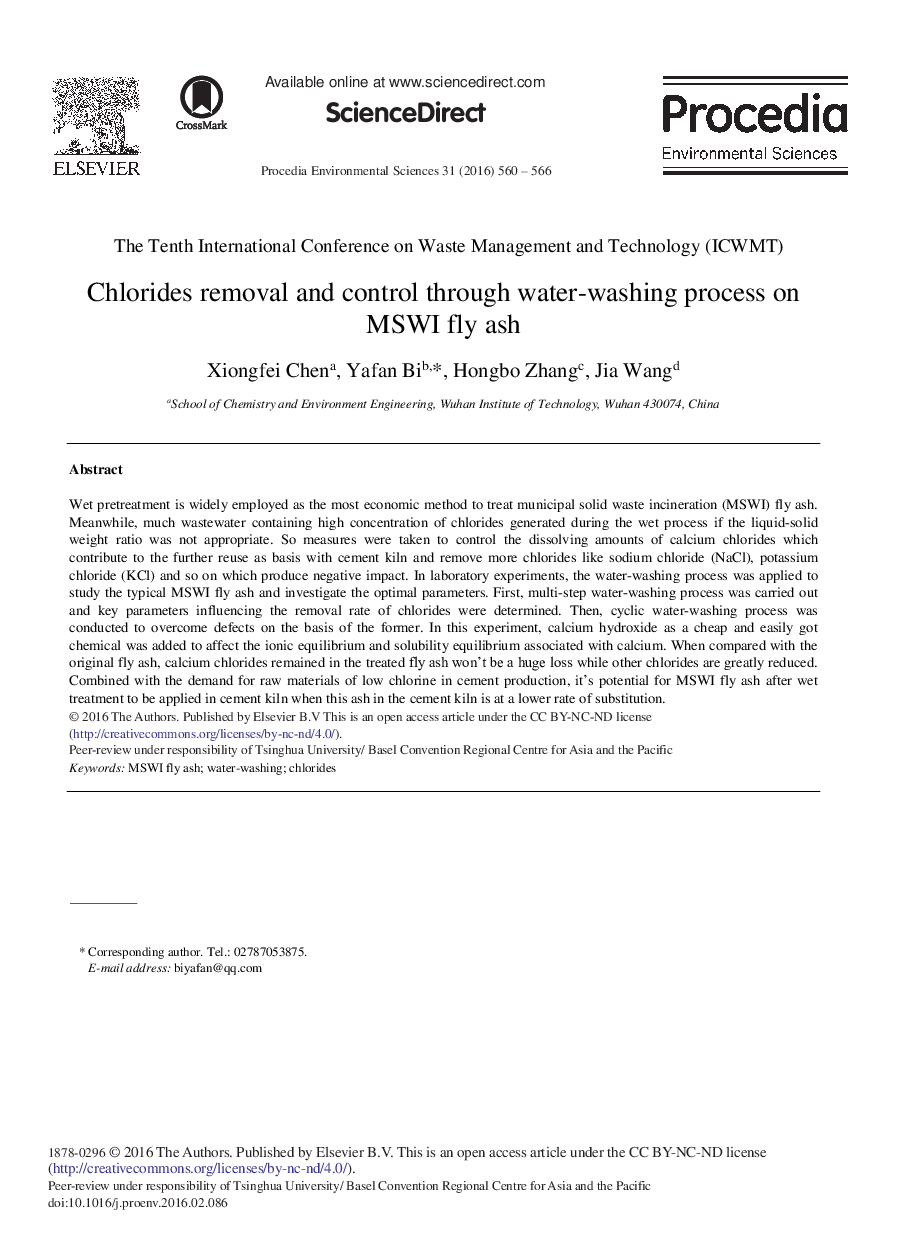| Article ID | Journal | Published Year | Pages | File Type |
|---|---|---|---|---|
| 4401586 | Procedia Environmental Sciences | 2016 | 7 Pages |
Wet pretreatment is widely employed as the most economic method to treat municipal solid waste incineration (MSWI) fly ash. Meanwhile, much wastewater containing high concentration of chlorides generated during the wet process if the liquid-solid weight ratio was not appropriate. So measures were taken to control the dissolving amounts of calcium chlorides which contribute to the further reuse as basis with cement kiln and remove more chlorides like sodium chloride (NaCl), potassium chloride (KCl) and so on which produce negative impact. In laboratory experiments, the water-washing process was applied to study the typical MSWI fly ash and investigate the optimal parameters. First, multi-step water-washing process was carried out and key parameters influencing the removal rate of chlorides were determined. Then, cyclic water-washing process was conducted to overcome defects on the basis of the former. In this experiment, calcium hydroxide as a cheap and easily got chemical was added to affect the ionic equilibrium and solubility equilibrium associated with calcium. When compared with the original fly ash, calcium chlorides remained in the treated fly ash won’t be a huge loss while other chlorides are greatly reduced. Combined with the demand for raw materials of low chlorine in cement production, it's potential for MSWI fly ash after wet treatment to be applied in cement kiln when this ash in the cement kiln is at a lower rate of substitution.
